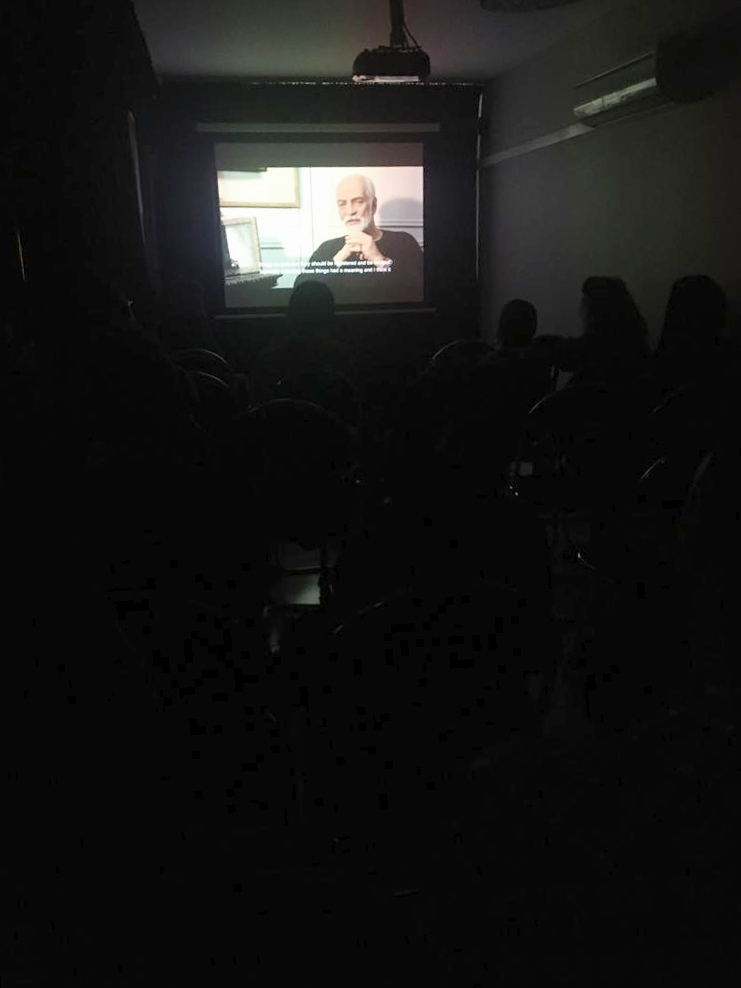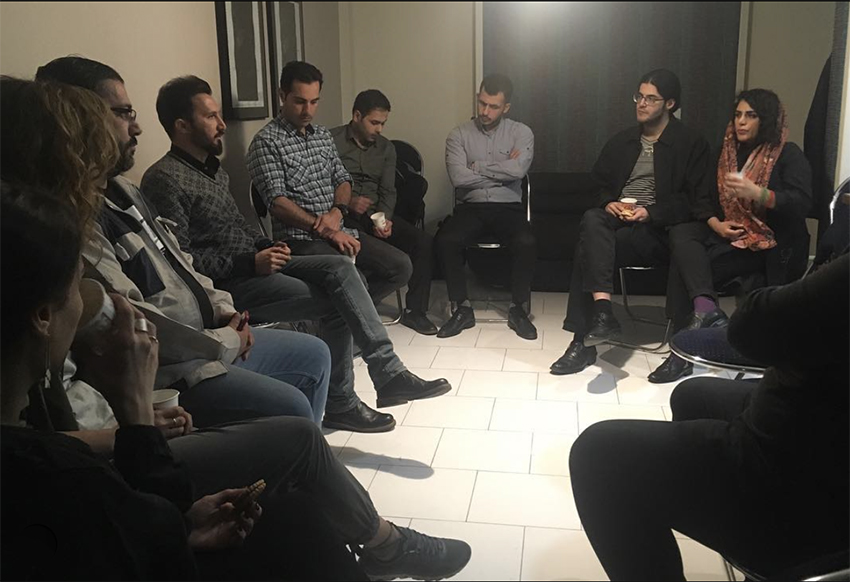
Paadman Projects with collaboration of GAAH ARt presented:
film screening and director talk "Like a Shadow, Like a Thought"
a documentary film about Marcos Grigorian.
directed by Hamidreza Zeinali, at GAAH space in Tehran.
The event started with screening the documentry by Hamidreza Zeinali.
After screening we had a nice chat with Mr Zeinali.
The event happened on 21 April 2019.


A Short biography about Marcos Grigorian:
 Marcos Grigorian, but also known as Marco Grigorian[1] (Armenian: Մարկոս Գրիգորեան; Persian:
Marcos Grigorian, but also known as Marco Grigorian[1] (Armenian: Մարկոս Գրիգորեան; Persian:
مارکو گريگوريان; December 5, (1925 – August 27, 2007) was an Iranian-Armenian and
American artist and gallery owner, he was a pioneer of Iranian modern art.
Grigorian was born in Kropotkin, Krasnodar Krai, Russia, to an Armenian family
from Kars who had fled that city to escape massacres when it was captured by
Turkey in 1920. In 1930 the family moved from Kropotkin to Iran, living first in
Tabriz, and then in Tehran. The Apadana gallery in Tehran opened in 1949, and began
After finishing his primary education in Iran, in 1950 he studied at the Accademia di Belle Arti in Rome. Graduating
from there in 1954, he returned to Iran, opened the Galerie Esthétique, an important commercial gallery in
Tehran. In 1958, under the auspices of the Ministry of Culture, he organized the first Tehran
Biennial. Grigorian was also an influential teacher at the Fine Arts Academy, where
he disseminated hisenthusiasm for local popular culture, including coffee-house
paintings, a type of folk art named after the locations in which they were often
In the 1950s he acted in a few Iranian films, under the name "Marc Gregory".
He lived in the 1960s in the United States first moving in 1962 to New York City, and then moved to Minneapolis to
work at Minnetonka Center for the Arts. In Minneapolis he started Universal Galleries which became an
influential center for Iranian art in Minneapolis, and it existed at the same time along with a quickly growing Modern
Iranian art collection that could be found at Abby Weed Grey's home. In 1975, Grey donated her collection to
form New York University's art museum, the Grey Art Gallery.
In 1975, Grigorian helped organize the Group of Free Painters and
Sculptors in Tehran and was a founder member. Other founding
 artists included Gholamhossein Nami, Massoud Arabshahi, Morteza
artists included Gholamhossein Nami, Massoud Arabshahi, Morteza
Momayez, Mir Abdolrez Daryabeigi, and Faramarz Pilaram.
Grigorian was an early artist with earthworks and land art in Iran.
Grigorian eventually moved to Yerevan, Armenia (which was then
still a republic of the Soviet Union). In 1989, he traveled to Russia
at the invitation of the Union of Russian Artists, visiting Moscow
and Leningrad.
He exhibited his clay and straw works in Yerevan in 1991. He later donated
5,000 of his artworks to the
government of Armenia. In 1993 he founded the "Museum of the Middle East" in Yerevan: 2,600 exhibits are on
display, with most of them coming from his own collection.
Some of his works are now on display at various museums including the
Museum of Modern Art (MOMA) in New York City, Metropolitan Museum of
Art (The Met) in New York City, Tehran Museum of Contemporary Art,
Museum of Contemporary Art in Kerman, Near East Art Museum in Yerevan,
and the National Gallery of Armenia.
On 4 August 2007 Grigorian was assaulted and beaten about the head by two
masked robbers who had broken into his Yerevan home. It was speculated
that the robbers believed, erroneously, that there was a large sum of money
in the house, proceeds from the sale of Grigorian's summer residence in Garni.
After an anonymous phone call to police, Grigorian was discovered injured and
taken to hospital. He died of a suspected heart attack on 27 August 2007, a
day after leaving the hospital.
Reference: https://en.wikipedia.org/wiki/Marcos_Grigorian

